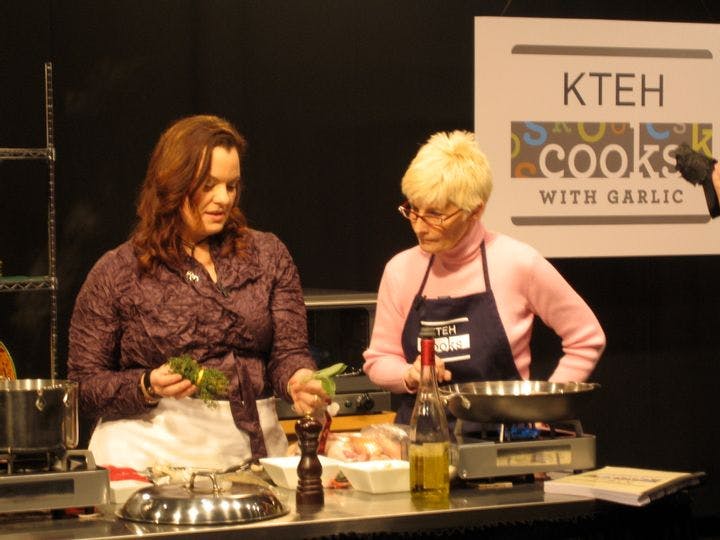Summer 2009
Food for the Eye
– Renuka Rayasam
Television cooking shows, and how they're changing the way America eats.
Even in high school, I was a cooking show devotee. My brother and I spent our summer vacations in a state of delicious torture, watching programs such as Death by Chocolate, salivating over decadent desserts we never made ourselves. Today, flipping through the pantheon of cable television offerings, I have more choices than ever to satisfy my appetite. And judging from Kathleen Collins’s Watching What We Eat, I am not the only one mesmerized by chefs who dice and sauté. Few cooking show enthusiasts prepare the meals they watch being made, Collins writes, but “these shows prevail because everyone eats, knows something about food, and can relate to the endeavor.”
Television cooking shows have their roots in earlier, widely distributed radio programs in which actresses playing homemaker personalities such as Betty Crocker disseminated recipes and kitchen tips. The advent of television in the 1940s, which allowed for glorious visuals of what was prepared, brought food shows new popularity. Revered cookbook author James Beard hosted the first program, I Love to Eat, which began airing in 1946, but Julia Child dominated the art form from her debut in 1962 with The French Chef series. For decades she was a fixture on public television, cheerfully educating viewers about French cooking.
Now food shows run all day long on their own cable channel, the Food Network, which claims to reach 98 million homes. The shows themselves have evolved beyond simple recipe instruction to cooking competitions, travel programs, and other mouthwatering forms of entertainment. The reality television show Ace of Cakes takes viewers behind the scenes of a Baltimore bakery, and Secrets of a Restaurant Chef features a vivacious host who demonstrates how to translate restaurant dishes into home-cooked recipes.
Collins, reared on food television and educated in library science, brings to the table a wealth of personal experience and research. She mined television and print archives to uncover fascinating gems about television cooking-show pioneers. On the set, Beard invented modern elements of food styling still common in food photography, using ink to emphasize the veins in Roquefort cheese and substituting mashed potatoes for ice cream. The producer of The Galloping Gourmet, which first aired in 1969, was host Graham Kerr’s wife, Treena. Completely uninterested in food, she jazzed up the standard recipe-instruction format, adding a live audience and sometimes booby-trapping the set.
Unfortunately, there is little to bind the ingredients of this book, which lurches from food show descriptions to interviews with producers, hosts, and cultural critics, to distracting personal anecdotes. Collins can’t seem to decide whether she’s writing a scholarly work or a personal ode to food culture. For example, in noting the rise of cooking as a leisure activity—a topic that warrants a book of its own—she suggests that, in the post–Betty Friedan world, women came to see their activity in the kitchen as a form of self-expression. Rather than develop this idea, she simply quotes the tag line from a Burger King ad, “Have it your way.”
Collins’s ultimate goal is to explain why we watch food television even if we don’t make the recipes the hosts theatrically whip up. It’s a good question, but she never hits upon a satisfactory answer. Her devotion to the form leads her to argue that it’s because food television is unique in its ability to keep pace with decades of social trends. But as someone who also whiles away hours watching chefs sous-vide beef and fill ravioli dough, I think the reason may be simpler: We watch food shows because, like all good television, whether house makeovers or sitcoms, they tell a story. In the case of food programs, the drama is in the transformation of raw sundries into edible creations.
* * *
Renuka Rayasam has written about celebrity chefs for U.S. News & World Report and Condé Nast Portfolio, among other publications.
Reviewed: Watching What We Eat: The Evolution of Television Cooking Shows by Kathleen Collins, Continuum 278 pp, 2010.
Photo courtesy of Flickr/Mary Hodder
